Dunnae Folk Village (둔내민속촌)
16.5Km 2024-02-26
47 Dunnae-ro 47beon-gil, Dunnae-myeon, Hoengseong-gun, Gangwon-do
033-342-7807
Dunnae Folk Village is a traditional Korean restaurant in Hoengseong, known for its focus on local cuisine. Their signature dish, gondeure namul bap (thistle rice), is prepared with a health-conscious approach. The rice, cooked in a hot stone pot, exudes a delightful fragrance and pairs exceptionally well with the gangdoenjang (seasoned soybean paste) offered alongside it. Additionally, the restaurant offers a variety of Korean dishes, including deodeok gui baekban (grilled deodeok set menu), namul doenjang jjigae (salad soybean paste jjigae), and gamja jeon (potato pancake).
Hanbando Electric Kart Experience Center (한반도 전기카트 체험장)
17.0Km 2024-01-09
63-33 Ansaenae-gil, Hanbando-myeon, Yeongwol-gun, Gangwon-do
Hanbando Electric Kart Experience Center is Korea's first outdoor electric go-kart experience center using renewable energy. It is located in a pine forest in Sincheon-ri, Hanbando-myeon. All facilities and tracks, including helmets and karts, are kept clean and safe, allowing anyone to enjoy driving once they follow simple operation methods and precautions. Stretched pine trees lining up next to the winding track double the speed and coolness. Solar power, a renewable energy source, was installed in the experience center to preserve the pristine wetlands and pine forests. Feel the dynamic eco-friendly speed in clean nature!<Br> * Minimum driver x_height is 130 cm
Cheongtaesan National Recreational Forest (국립 청태산자연휴양림)
17.0Km 2022-09-06
610, Cheongtaesan-ro, Hoengseong-gun, Gangwon-do
+82-33-343-9707
The 1,200-meter-high Cheongtaesan Mountain is a mountain where planted and naturally growing trees flourish in harmony, creating dense forests that provide a habitat for woodland creatures. In the summer, the forest is a convenient stopover for vacationers headed for the East Coast and both children and adults can enjoy learning about the local ecology at the Forest Education Facility.
Geumdanggyegok Valley (금당계곡)
17.1Km 2021-07-29
766-2, Geumdanggyegok-ro, Pyeongchang-gun, Gangwon-do
+82-33-330-2771
Geumdanggyegok Valley, located upstream of the Pyeongchanggang River, is a gorge between three different districts of Bongpyeong-myeon, Yongpyeong-myeon and Daehwa-myeon, just west of Geumdangsan Mountain (1,173 m). Geumdanggyegok Valley is an impressive site with sections of both gentle and fast flowing valley waters. From late March through April full-blown azalea covers the mountainsides and valleys providing visitors with a refreshing spring scent.
To reach Geumdanggyegok Valley, travel down along the Pyeongchanggang River from Jangpyeong or trek up the valley from Anmi Elementary School. Coming down to Pyeongchang-eup from Daehwa-myeon area, visitors will encounter an intersection called, “Saechugeori”. The intersection has two parts: Sanganmi and Haanmiri and a sign indicating the Geumdanggyegok Valley entrance. Across the valley, odd-shaped rock formations and cliffs appear one after another along the river. The area is a native habitat for a species of otter (Natural Treasure No. 330) and a favorite spot for catching catfish.
Woodblock Printing Museum (고판화박물관)
17.3Km 2023-07-17
62 Muran-gil, Wonju-si, Gangwon-do
Opened in 2004, it is the only museum in Korea that specializes in and exhibits old woodblock printings from all around the world. Woodblock Printing Museum collects, stores, exhibits, researches and educates on ancient woodblock materials from many different Asian countries where engravings and woodcuts flourished including Korea, China, Japan, Tibet, Mongolia, India and Nepal. It currently stores over 3,500 individual relics including some 1,800 original woodblocks, 300 old woodblock works engraved as woodcuts, 200 books engraved on woodblocks, and 200 materials related to woodcuts. There is also a permanent woodblock experience hall, which is often utilized as a place to experience and educate those on site who are not satisfied with just seeing the works.
Hanbando Raft Village (한반도 뗏목마을)
18.2Km 2024-01-09
70 Seonam-gil, Hanbando-myeon, Yeongwol-gun, Gangwon-do
The Hanbando Raft Village is a raft experience center in Seonam Village, Ongjeong-ri, famous for its topography in the shape of the Korean Peninsula. It takes about 30 minutes to go back and forth on a raft from the east coast of the Mini Korean Peninsula to the west coast. While riding the raft, the boatman tells the story of the topography of the Mini Korean Peninsula and the fish living here. It is available from spring to autumn. In addition, various raft experiences are under operation, such as the Seogang Underwater Surveyor, a remodeled rafting boat that allows you to clearly view the underwater scenery.
Sansogui Chingu (농가맛집 산속의 친구)
18.4Km 2024-01-09
132-54 Deokjeon-gil, Buk-myeon, Yeongwol-gun, Gangwon-do
Sansogui Chingu, which means "a friend in the mountains," is a recognized restaurant in Yeongwol that has earned the title "Nongga Matjip," which means Delicious Farmhouse Restaurant. It has the cozy ambience of a typical countryside tile-roofed farmhouse. The restaurant makes their own soybean and red pepper paste, which are stored in the numerous crocks seen by the restaurant building. The restaurant's signature menu is Gangwon Namul Bap (wild vegetable rice set menu). The appetizing wild vegetables such as fisher’s ragwort, cow parsnip, and thistle are seasoned with housemade soy sauce, pastes, and enzymes, giving a deep and rich taste that cannot be achieved with additives or store bought seasonings. Visitors can also purchase soybean paste, soy sauce, red chili paste, and rich soybean paste made in the traditional way.
Hoengseong National SoopCheWon (국립횡성숲체원)
18.5Km 2023-12-07
777 Cheongtaesan-ro, Dunnae-myeon, Hoengseong-gun, Gangwon-do
Hoengseong National SoopCheWon is located 850 meters above sea level on Cheongtaesan Mountain. It is Korea's first national forest education center to be opened and operated by the Korea Forest Welfare Institute. Follow the Neulsolgil trail along the nut pine trees to reach the Forest Healing Center to experience the wellness programs available for visitors of all ages. Visitors can also enjoy nature to the fullest by catching glimpses of small wild animals like squirrels and pine cones among the trees. There's also a creek by the birch forest and a walking deck suited for visitors of all ages and wheelchair users.
Korean Peninsula Terrain [National Geopark] (한반도지형 (강원고생대 국가지질공원))
18.5Km 2024-04-08
555 Hanbando-ro, Hanbando-myeon, Yeongwol-gun, Gangwon-do
Korean Peninsula Terrain was formed by soil transported from upstream to the curvature of the confluence of two rivers. It is often referred to as Mini Korean Peninsula because it resembles the shape of the Korean Peninsula. It is said to have this appearance due to the erosion of the incised stream flowing around the terrain. It takes a 15-minute walk along the pine forest trail for about 800 meters from the parking lot to reach there. The well-maintained trail with many wildflowers and plants creates a welcoming atmosphere. Upon arriving at the observation point, visitors will be amazed by the beautiful curved river and the topography taking the same shape as the Korean Peninsula. Designated as the Gangwon Paleozoic National Geopar, this area has excellent geographical value because it shows the characteristics of the incised mender river as well.
Guryongsa Temple (구룡사)
19.0Km 2022-12-21
500, Guryongsa-ro, Wonju-si, Gangwon-do
+82-33-732-4800
Guryongsa Temple is located 6 kilometers from Birobong Peak on Chiaksan Mountain, in the direction of Hakkok-ri. It was believed that Monk Uisang (625-702) of the Silla Kingdom (57 BC - AD 935) built and named the temple Guryongsa in 668 during the reign of King Munmu. However, it is now known that the temple was built after King Sukjong, the 19th King of the Joseon dynasty (1392-1910), who reigned from 1674 to 1720, because of the architectural style of Daeungjeon Hall. There is a legend that the Guryongsa Temple site was originally a lake where nine dragons lived. The name Guryong comes from the story that the lake was filled up to build the temple on it. There are many buildings such as Daeungjeon Hall, Bogwangnu Pavilion, Samseonggak Pavilion, Simgeomdang Hall and Seolseondang Hall. Daeungjeon Hall has maintained its original shape though it was repaired many times.

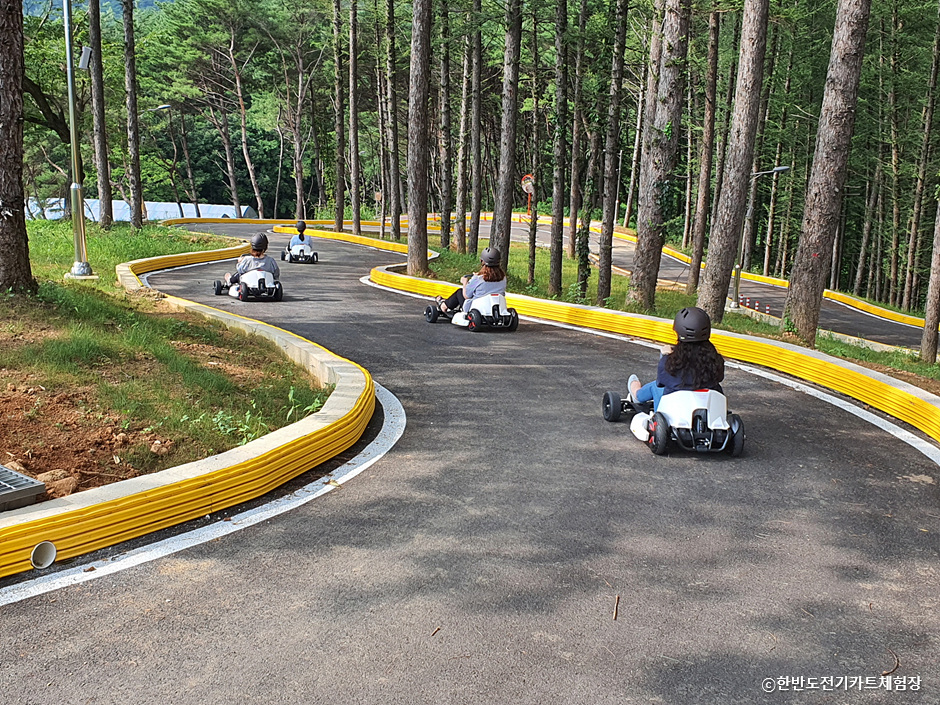

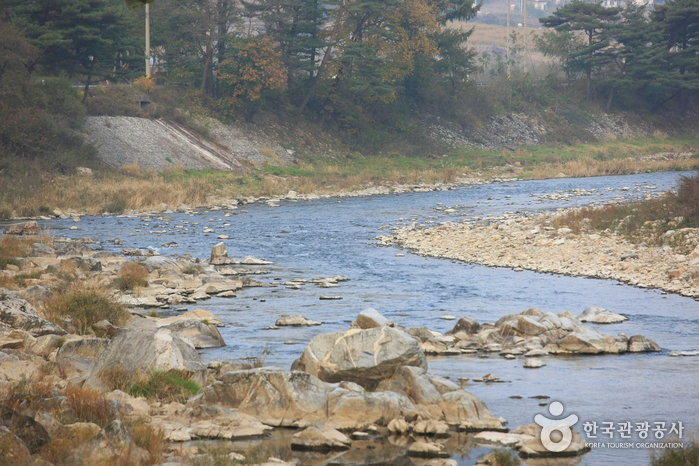
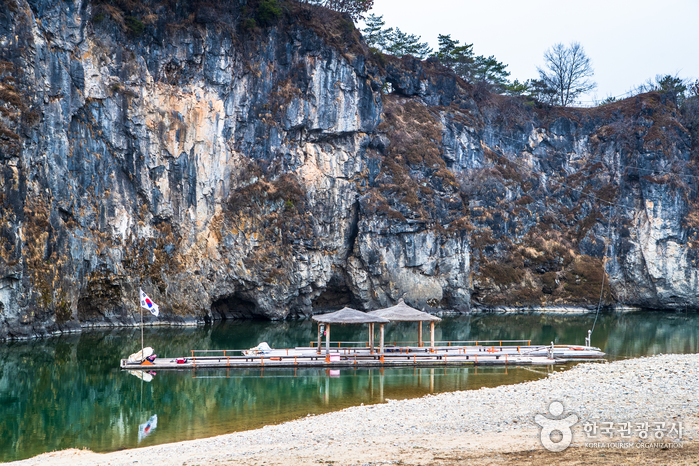
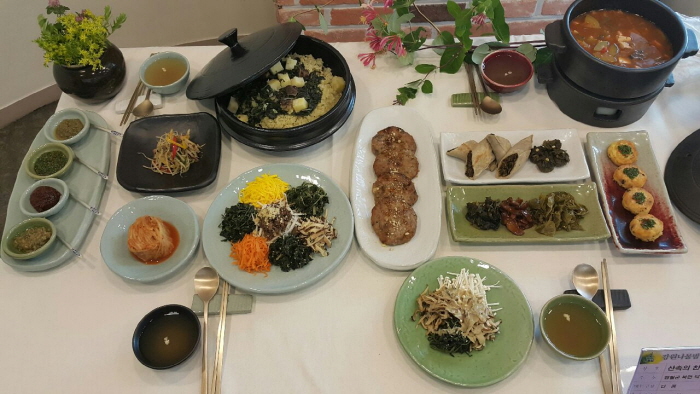
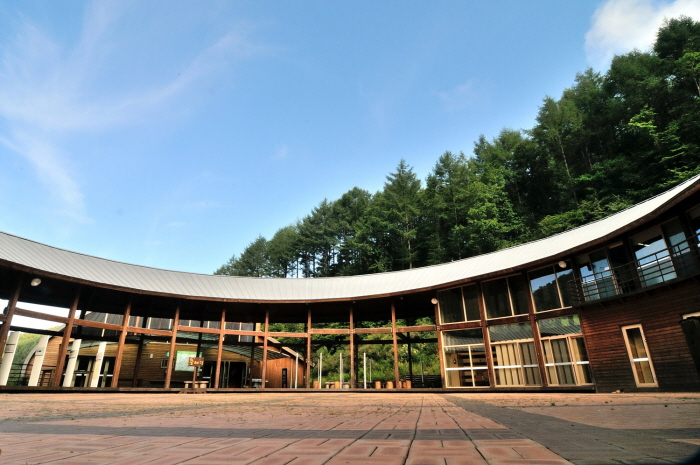
![Korean Peninsula Terrain [National Geopark] (한반도지형 (강원고생대 국가지질공원))](http://tong.visitkorea.or.kr/cms/resource/57/2517657_image2_1.jpg)
 English
English
 한국어
한국어 日本語
日本語 中文(简体)
中文(简体) Deutsch
Deutsch Français
Français Español
Español Русский
Русский